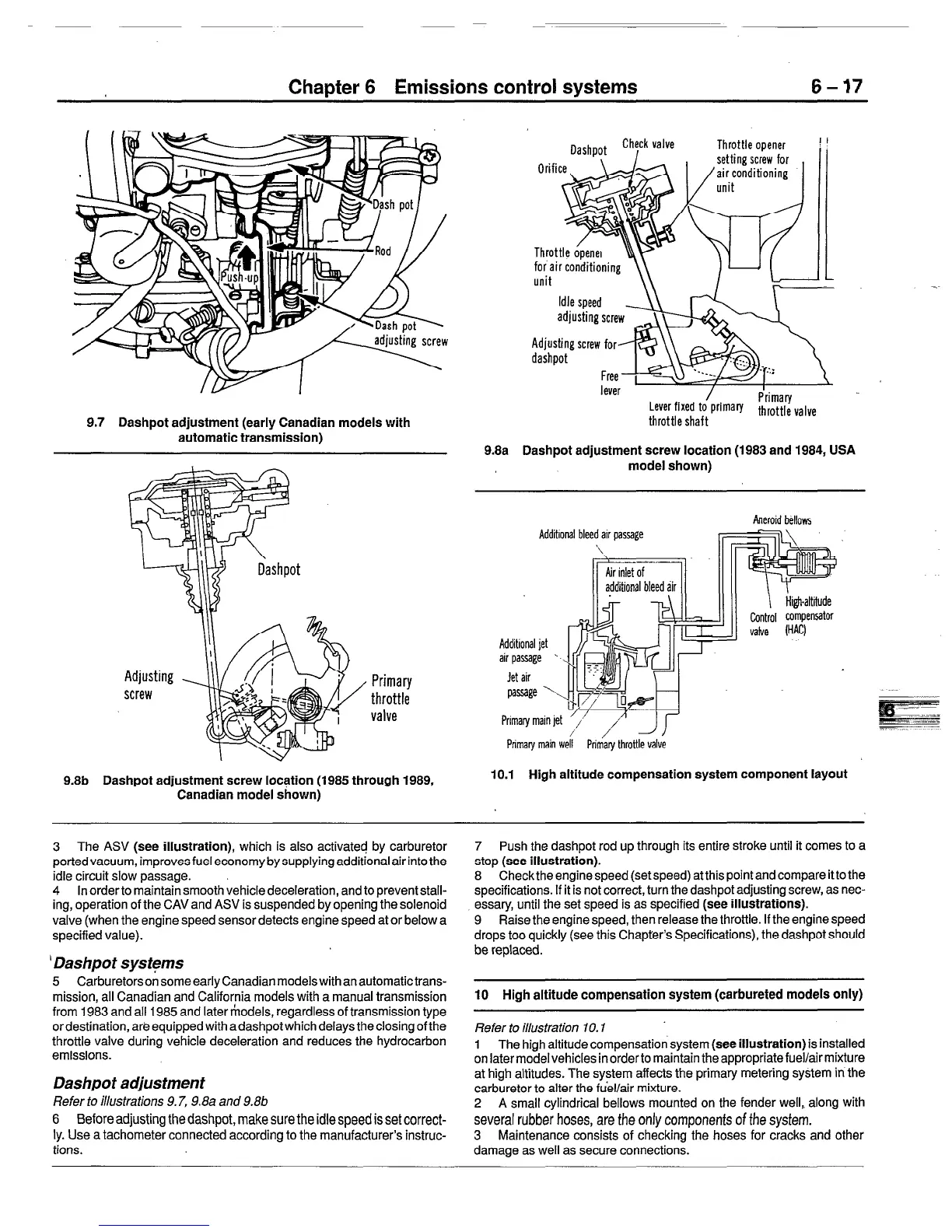Chapter 6
Emissions control systems
6-17
9.7 Dashpot adjustment (early Canadian models with
automatic transmission)
Primary
throttle
valve
9.8b Dashpot adjustment screw location (1985 through 1989,
Canadian model shown)
Orifice
Throttle opener
, syftijli;crew for ii
Throttle o/pener
for air conditioning
unit
.__’
Lever trxed to primary
Primary
throttle shaft
throttle valve
9.8a Dashpot adjustment screw location (1983 and 1984, USA
model shown)
Aneroid bellows
AdditroMl bleed arr passage
10.1 High altitude compensation system component layout
3 The ASV (see illustration), which is also activated by carburetor
portedvacuum, improves fuel economy by supplying additional air into the
idle circuit slow passage.
4 In order to maintain smooth vehicle deceleration, and to prevent stall-
ing, operation of the CAV and ASV is suspended by opening the solenoid
valve (when the engine speed sensor detects engine speed at or below a
specified value).
’ Dashpot systems
5 Carburetorson some early Canadian modelswith an automatic trans-
mission, all Canadian and California models with a manual transmission
from 1983 and all 1985 and later models, regardless of transmission type
or destination, are equipped with adashpot which delays the closing of the
throttle valve during vehicle deceleration and reduces the hydrocarbon
emissions.
Dashpot adjustment
Refer to ilhsfrafions 9.7, 9.8a and 9.8b
6 Before adjusting thedashpot, make sure the
idle speed is set correct-
ly. Use a tachometer connected according to the manufacturer’s instruc-
tions.
7 Push the dashpot rod up through its entire stroke until it comes to a
stop (see illustration).
8 Checkthe engine speed (set speed) at this point and compare it to the
specifications. If it is not correct, turn the dashpot adjusting screw, as nec-
essary, until the set speed is as specified (see illustrations).
9 Raise the engine speed, then release the throttle. If the engine speed
drops too quickly (see this Chapter’s Specifications), the dashpot should
be replaced.
10 High altitude compensation system (carbureted models only)
Refer to illustration 10.1
1 The high altitude compensation system (see illustration) is installed
on later model vehicles in order to maintain the appropriate fuel/airmixture
at high altitudes. The system affects the primary metering system in the
carburetor to alter the fuel/air mixture.
2 A small cylindrical bellows mounted on the fender well,, along with
several rubber hoses, are the only components of the system.
3 Maintenance consists of checking the hoses for cracks and other
damage as well as secure connections.

